1031 Exchange Basics for California Investors: How to Defer Taxes and Build Wealth Strategically
In today’s post, we’re diving into one of the most powerful tools available to real estate investors: the Section 1031 Exchange.
If you’ve owned rental property for any length of time, chances are you’ve heard of a 1031. The basic idea is simple, and incredibly attractive:
Sell an investment property, reinvest the proceeds into another like-kind property, and defer paying capital gains taxes.
That tax deferral can keep your full equity working for you, helping you level up into bigger or better properties without taking an immediate tax hit.
But here’s the thing…
Most investors understand the benefit of a 1031. What trips people up is the execution, especially the tight timelines.
Why the 1031 Exchange Process Feels Intimidating
Here’s where things get real:
- You only have 45 days to identify potential replacement properties after the sale of your current property closes.
- And you must close escrow on the new property within 180 days of the sale.
That 45-day identification window moves fast, very fast. It’s not uncommon for investors to freeze up, second-guess, or feel like the process is too risky or overwhelming to pursue.
If that’s you, you’re not alone. But with the right team and some key moves made early, you can execute a 1031 exchange with confidence.
Let’s talk about the critical first steps you should take, ideally before your current property even hits the market.
Step 1: Line Up a Qualified Intermediary (QI)
This is non-negotiable.
Under IRS rules, you are not allowed to take possession of the sale proceeds — not even for a moment — if you want to qualify for 1031 treatment. The funds must be held by a Qualified Intermediary, also called a QI.
Why this matters:
- The QI is the legal bridge between your sale and your purchase.
- They handle the documentation, the holding of funds, and help you stay compliant with IRS deadlines.
- Choosing a reputable, experienced QI before you sell is essential.
Tip: Don’t wait until escrow closes to start looking for a QI. Involve them early so you can structure your transaction properly from the start.
Step 2: Work With a Real Estate Agent Who Knows 1031 Exchanges
A successful 1031 exchange isn’t just about selling your property, it’s about strategically lining up your next one, under intense time pressure.
That’s why you need a real estate professional who:
- Understands how 1031s work.
- Knows how to time and structure listings with the replacement purchase in mind.
- Has deep experience in your local market, so they can move quickly when opportunities arise.
Your agent needs to help you both sell and identify/purchase within the timelines. This is not the time to work with someone who’s figuring it out as they go.
At True Haven, my partner Antonio Yepez and I have personally guided dozens of clients through this process in Davis, Sacramento, and surrounding areas over the past 20+ years. We understand how to navigate this strategically with confidence and speed.
Step 3: Coordinate With Your Tax Advisor and Legal Counsel
The 1031 exchange is a tax deferral strategy, not a tax loophole. So it’s critical that your Tax Advisor or CPA is involved early to help structure things like:
- Proper replacement of debt and equity.
- Ensuring the new purchase qualifies as a like-kind investment.
- Aligning the exchange with your overall financial strategy.
Depending on the complexity of the transaction, involving your real estate attorney may also be wise, particularly when dealing with partnerships, trusts, or out-of-state properties.
Why All This Matters: 1031 Success Depends on Preparation
Yes, the timelines in a 1031 exchange are strict. But the rewards, tax deferral, portfolio growth, increased cash flow, can be well worth the effort.
What makes the difference is preparation.
✅ Assemble your team early.
✅ Understand the rules before listing your property.
✅ Lean on experienced professionals who’ve navigated these waters before.
Free Resources to Help You Get Started
If you’re even considering selling an appreciated investment property and want to explore whether a 1031 exchange makes sense, here’s what we’ve got for you:
- Chapter 13 of our
FREE Essential Guide to Rental Property Success offers a quick intro to 1031 exchanges and common pitfalls.
- Our Free Strategic Investment Consultation also gives you the chance to talk through your specific property, timeline, and long-term goals — no pressure, just guidance.
👉 Download E-book here
👉 Click here for free consultation
Final Thought: Don’t Let Timeline Anxiety Stop You from Growing Your Portfolio
The 1031 exchange is one of the few tax strategies still available that can help you build wealth more efficiently as a real estate investor.
It’s not about doing it alone, it’s about doing it right.
Start early. Build your team. Move strategically.
And if you’re looking for support in the Davis, Sacramento, or broader Northern California area, we’d love to be part of that conversation!













